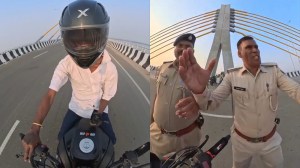Maharashtra first to have standard ambulance design
There are no standards in India on the design of ambulances.
Maharashtra’s emergency medical system,envisaged after the serial blasts in 2006,and marked with incessant delays since then,is finally on track. The state government has now roped in experts at AIIMS to provide technical support in the planning and design of the 937 ambulances it plans to roll out under the NHRM.
There are no standards in India on the design of ambulances. The Maharashtra government is the first to acknowledge the need for proper designing and planning of not only the ambulances,but an entire trauma management system. We have been asked to provide consultancy services, said Professor Shakti Gupta,head of hospital administration at AIIMS.
However,the project has been marked by delays and controversies. The first tender awarded to Satyams EMRI in 2008 had to be hurriedly withdrawn after the Satyam scandal. AIIMS has helped us in the role of a consultant in providing complete technical support in the design of the ambulances. Since the 1,000-odd ambulances will be deployed across the state,including remote areas,we did not want to leave any lacunae in the design and technical viability, said Health Minister Suresh Shetty.
The ambulances have been designed on the basis of international standards with specifications for body structure,vehicular design and interior chambers. Ambulance design should be based on ergonomics or the science of designing a space after taking into consideration the relationship between workers and their environment. The height and width specifications are very important for ensuring adequate space for moving the patient in and out, explained Dr Gupta.
The positioning of the medical equipment and the doctor or paramedics with respect to the patient is also crucial. AIIMS did a study of road ambulances in India under the Ministry of Road Transport and found gross inadequacies in the volumetric space distribution. For example,the doctors seat is almost always adjacent to the patient instead of facing him/her. The seating space is narrow,with gas cylinders and monitors crowded inside in a totally unscientific manner, said Dr Gupta. The lighting in ambulances is also crucial and nearly all Indian ambulances use regular tubelights,which is totally unacceptable as a doctor may be required to perform emergency procedures.
We are trying to cover all aspects to prepare the best possible structure that will set an example for other states, Shetty said. However,with such strict standards,the tendering process has been given an extension since only two companies have come forward,while others have sent queries. The government has invited experts from AIIMS to meet the companies and clear their doubts. The tendering process has also been extended as the government hopes to ensure more participation.




- 01
- 02
- 03
- 04
- 05



























